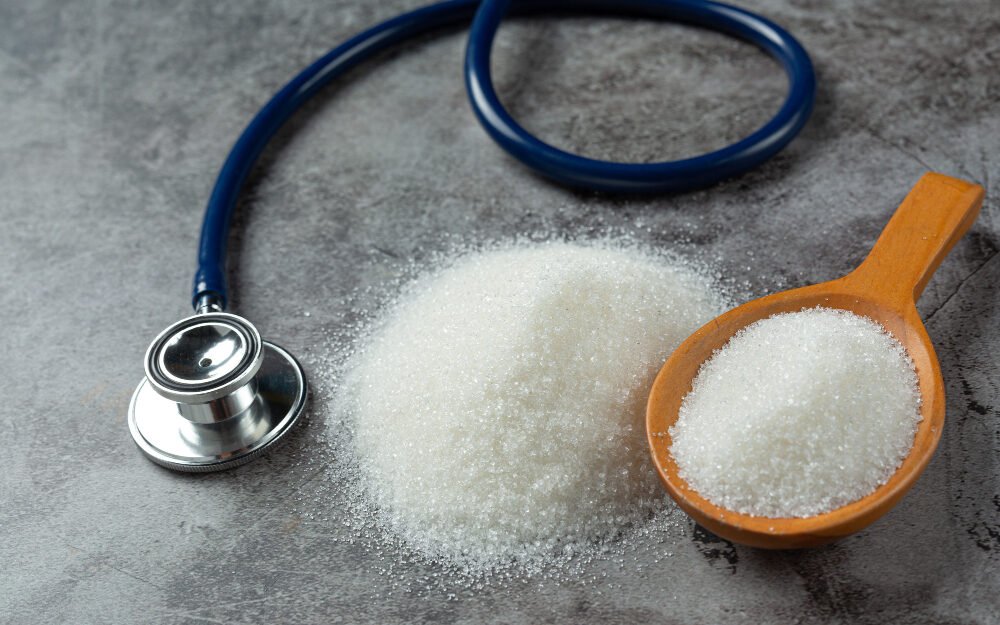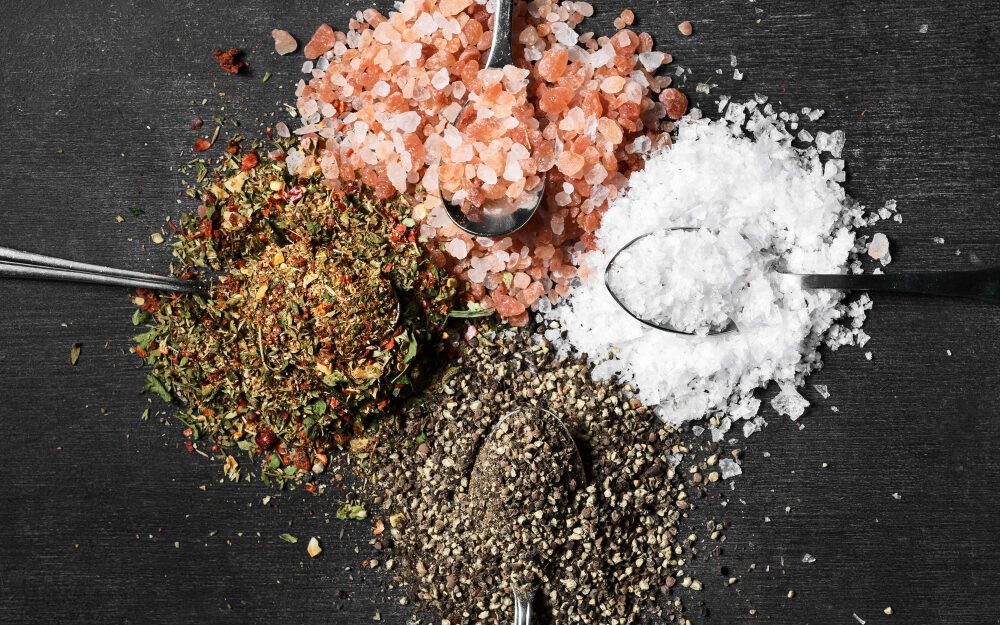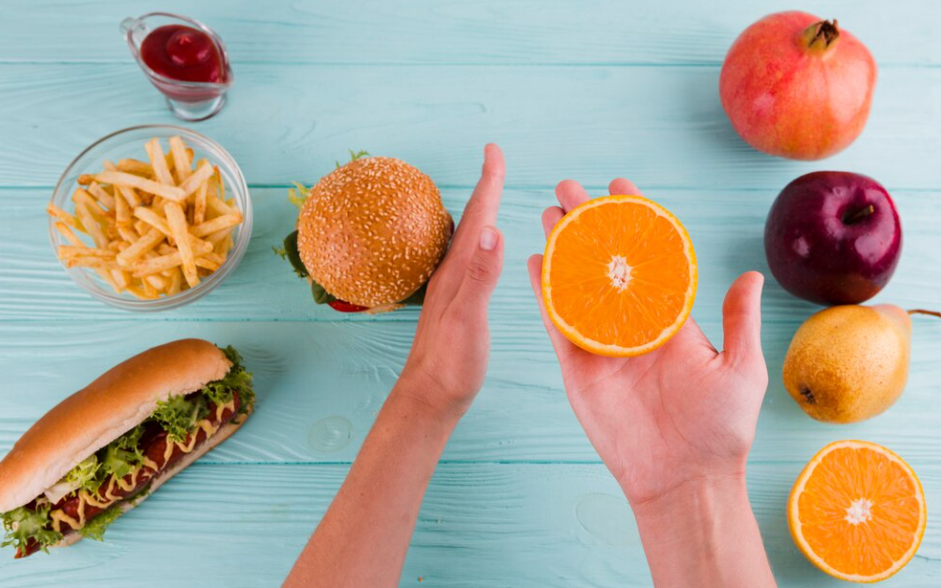Table of Contents
1. Introduction
The Connection Between Eating Salt and Hypertension involves a crucial balance between necessity and restraint. While salt is a dietary staple, its excessive consumption can exacerbate hypertension, posing risks to cardiovascular health. Understanding the intricate link between salt and elevated blood pressure is pivotal. This exploration aims to decipher the nuanced relationship, offering insights into recommended limits, personalized approaches, and practical strategies for managing salt intake. By unraveling the complexities surrounding salt consumption, individuals can empower themselves to make informed choices, fostering better control over blood pressure levels while ensuring overall well-being.

Image Credit Freepik
2. Understanding the link
The link between salt intake and high blood pressure is intricate yet impactful. Excessive salt consumption elevates sodium levels in the body, prompting fluid retention and increasing blood volume. This places added strain on blood vessels, leading to heightened blood pressure. Managing salt intake becomes pivotal in controlling hypertension. Understanding this connection empowers individuals to make informed dietary choices, emphasizing moderation and thoughtful sodium management for better blood pressure control and overall cardiovascular health.
3. Can You Eat Salt with High Blood Pressure?
3.1. Understanding Sodium Limits

Image Credit Freepik
Understanding sodium limits is crucial in managing high blood pressure. While sodium is essential for bodily functions, excessive intake can elevate blood pressure. The recommended daily limit for most adults ranges between 1500-2300 mg. However, individual needs may vary based on health conditions and age. Working with healthcare professionals to determine a personalized sodium threshold is key. Adhering to these limits empowers individuals to maintain healthier blood pressure levels and reduce the risk of cardiovascular complications.
3.2. Tailoring Sodium Intake to Individual Needs
Tailoring sodium intake to individual needs is paramount in managing high blood pressure. Factors like age, overall health, and existing medical conditions influence optimal sodium thresholds. Collaborating with healthcare professionals helps customize sodium recommendations, ensuring a balanced approach to mitigating hypertension risks. Understanding these individualized needs empowers individuals to navigate their sodium intake effectively, fostering a tailored approach that supports better blood pressure control and overall cardiovascular wellness.
4. Strategies for Managing Salt Intake
4.1. Cooking Fresh: A Salt-Reduced Approach
Cooking with fresh, whole ingredients offers a potent strategy in reducing salt intake. By preparing meals from scratch, individuals gain better control over added sodium. This approach not only ensures a healthier diet but also enhances flavors naturally, relying less on salt for taste. Embracing fresh produce, lean proteins, and whole grains promotes a heart-healthy lifestyle, contributing to effective blood pressure management while enjoying delicious, low-sodium meals.
4.2. Decoding Food Labels for Hidden Sodium
Decoding food labels is crucial in uncovering hidden sodium content in various products. Many processed foods harbor surprisingly high levels of sodium. Vigilantly examining labels empowers individuals to make informed choices, opting for lower or sodium-free alternatives. Understanding the intricate language of food labels enables better control over salt intake, ensuring that dietary decisions align with efforts to manage high blood pressure effectively and promote overall heart health.
4.3. Embracing Flavorful Alternatives

Image Credit Freepik
Embracing flavorful alternatives is key to reducing reliance on salt for taste. Herbs, spices, and citrus infusions offer a diverse and vibrant palette of tastes without compromising health. Experimenting with these alternatives not only enhances the enjoyment of meals but also promotes a lower sodium diet. This approach allows individuals to savor a variety of flavors while actively managing their salt intake, contributing to better blood pressure control and overall well-being.
4.4. Limiting Processed Foods
Limiting processed foods plays a pivotal role in managing salt intake and controlling high blood pressure. Processed and packaged foods are often laden with hidden sodium, contributing significantly to elevated salt consumption. By reducing reliance on these items and opting for fresh, whole foods instead, individuals can effectively lower their sodium intake. This shift toward whole foods not only supports better blood pressure management but also promotes a healthier, heart-conscious diet for overall well-being and cardiovascular health.

Image Credit Freepik
5. Conclusion (Connection Between Eating Salt and Hypertension)
Understanding the intricate relationship between salt intake and high blood pressure empowers individuals to make informed dietary choices. By adhering to recommended sodium limits, personalized thresholds, and implementing practical strategies like cooking fresh, decoding food labels, and embracing flavorful alternatives, managing salt intake becomes a proactive endeavor. Limiting processed foods further bolsters these efforts, fostering a heart-healthy lifestyle. This comprehensive approach not only aids in controlling high blood pressure but also promotes overall cardiovascular wellness. By prioritizing a balanced diet and mindful sodium management, individuals pave the way toward better blood pressure control and a healthier, more vibrant life.
6. FAQs (Connection Between Eating Salt and Hypertension)
Q1: Can I consume any salt if I have high blood pressure?
- A: Yes, in moderation. Consult your healthcare provider to determine the optimal sodium limit for your specific health conditions.
Q2: Are there specific foods I should avoid for low sodium intake?
- A: Processed foods, canned goods, and certain condiments often contain high sodium levels. Opt for fresh alternatives whenever possible.
Q3: How can I make my meals flavorful without using excess salt?
- A: Experiment with herbs, spices, and citrus to enhance taste. Cooking from scratch with fresh ingredients also allows for better control over salt content.
Q4: Is there a recommended sodium intake for everyone with high blood pressure?
- A: Individual needs vary. Healthcare professionals consider factors like age and overall health to tailor sodium recommendations.
Q5: Can reducing salt intake improve blood pressure levels?
- A: Yes, adopting a low-sodium diet can contribute to better blood pressure management. However, it’s crucial to complement this with an overall healthy lifestyle.
We thank you for reading our post “Connection Between Eating Salt and Hypertension”
Read More
The Advantage Of Vegetable And A Plant Based Meals 2023
Are Sweet Potatoes Suitable For Diabetic People: A Detailed Report By Dietitians 2023
Click Here for similar stories!